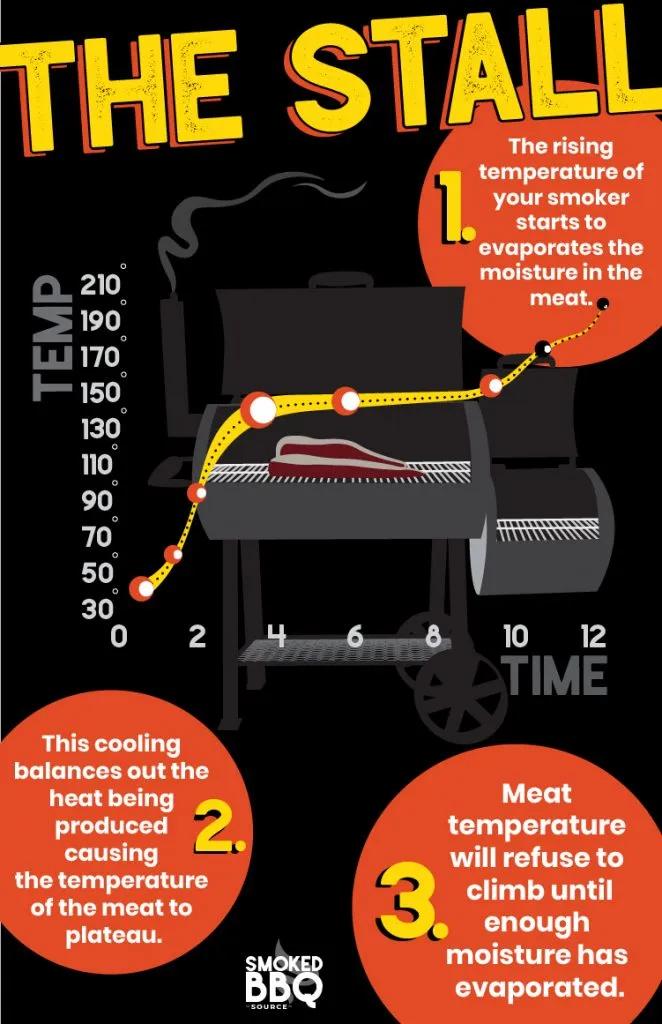Smoking meat can be a rewarding and delicious experience, but it can also come with its fair share of challenges. One such challenge is the smoked brisket stall temp, also known as the plateau or the zone. This phenomenon occurs when smoking or cooking larger cuts of meat at low temperatures for extended periods of time, and it can be quite frustrating for those who are not familiar with it. In this article, we will explore what the stall is, what causes it, and most importantly, how to overcome or avoid it.
What is the Stall?
The stall refers to a point in the smoking process where the interior temperature of the meat reaches about 150°F to 170°F and stops rising. This can last for hours, causing anxiety and uncertainty for the smoker. However, it is important to note that the meat will eventually start to rise in temperature again.
The stall occurs due to the evaporation of liquid on the meat's surface, which leads to evaporative cooling. This cooling effect is similar to when you sweat while working hard. The heating rate of the meat and the temperature of the smoker match the rate of evaporative cooling, resulting in the stall.

Factors that Affect the Stall
Several factors can influence the duration and severity of the stall. The two main factors are airflow and humidity.
Airflow plays a significant role in the stall temperature. Smokers with more airflow, such as wood and bullet-style smokers, tend to have a lower stall temperature at around 150°F. On the other hand, completely sealed smokers can experience a stall closer to 170°F. Understanding the airflow dynamics of your smoker can help you better manage the stall.
Humidity, both from the meat and the environment, also affects the stall. Dry days with low humidity may result in a shorter stall, while humid days can prolong the stall. Using a water pan in your smoker can help maintain humidity levels and promote more even cooking.
How to Get Past or Avoid the Stall
There are several techniques you can employ to overcome or avoid the stall:
The Texas Crutch
The Texas Crutch involves wrapping the meat in foil with some liquid, such as juice, wine, beer, or watered sauce. This creates a high-humidity environment that effectively braises the meat during the second half of the smoke. However, this technique may result in a softer bark. Alternatively, you can use unwaxed butcher paper, which provides a middle ground between foil and no wrapping.
Increase the Temperature
If you prefer a crisper bark and want to avoid wrapping the meat, you can raise the temperature of your smoker to try and get past the stall. Increasing the cook temperature to around 325°F can help overcome the evaporative cooling effect. However, be cautious as higher temperatures can disrupt the rendering of fat and connective tissue, potentially resulting in tougher meat.
Set It and Forget It
If you are patient and prefer a hands-off approach, you can set up your smoker with a water pan and let it go. This method involves planning for the stall and even a potential second stall. Use a wireless digital thermometer to monitor the smoker and meat temperature without needing to open the smoker frequently.
The smoked brisket stall temp is a common occurrence when smoking larger cuts of meat. Understanding the causes and implementing the right techniques can help you overcome or avoid the stall. Whether you choose to use the Texas Crutch, increase the temperature, or take a hands-off approach, the key is to remain patient and let the smoking process work its magic. Happy grilling!
If you want to know other articles similar to Mastering the smoked brisket stall temp: tips and techniques you can visit the Smoking category.


Related Articles